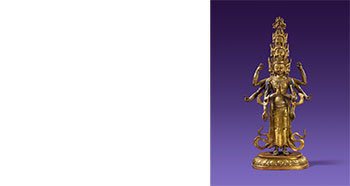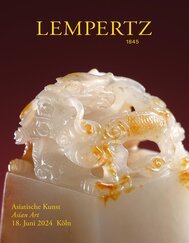In the taste of the Son of Heaven
Imperial desk objects from a Westphalian private collection (lots 77 – 84)

The Qianlong Emperor was the greatest collector and patron of the arts in the history of China. He expanded the court’s antique collections significantly but also instructed the palace workshops to produce numerous new works of art in a variety of materials. Jade was his particular passion, the ‘stone of heaven’, as evidenced by the almost 800 poems in which he praised it. Around 1757, the Qing dynasty conquered the region of present-day Xinjiang, which had legendary jade deposits. Khotan jade, named after an ancient kingdom once located there, was extracted from mines in the Kunlun Mountains and collected in the form of pebbles from the Jurungkash (White Jade River) and then transported in large quantities to China’s Central Plain. There it heralded the Golden Age of Chinese jade art, with the emperor ordering them to be carved to his taste in the workshops of Beijing, Suzhou and Yangzhou.



Imperial seals on documents represented the authority conferred by heaven, with forgery punishable by death. Qianlong is said to have possessed around 1800 seals, many of which are documented in the ‘Qianlong baosou’, the catalogue of his seal impressions, which is now kept in the Palace Museum in Beijing. They can be divided into two main categories: ‘state treasure’ seals (guobao) for official government documents, and leisure seals (xianzhang) for labelling art objects. The latter were engraved with auspicious or historical idioms (chengyu). The two pairs of seals to be offered for auction here (lots 77 and 78) are leisure seals which were carved on the occasion of the emperor's seventieth and eightieth birthdays. The delicately carved pommels and the choice of colours reflect the personal taste of the emperor, who repeatedly exerted a direct influence on the jade production with very specific wishes.
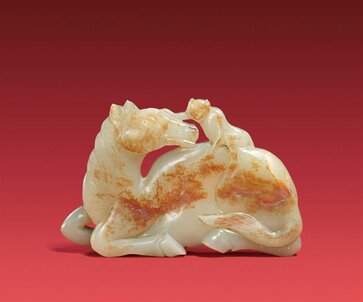
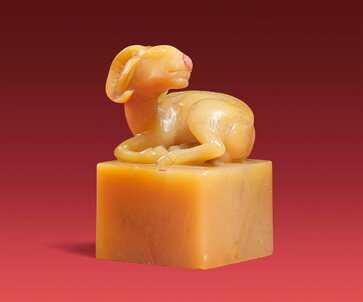
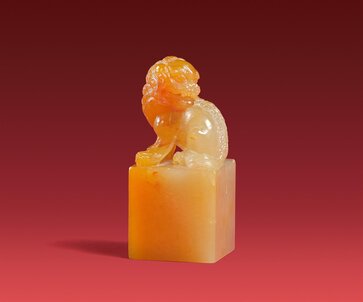
Testimony to the intellectual vigour he maintained into old age, the four-character idioms chosen for the stamps refer to poems by Tang-period poets and complex discussions of governance in the Confucian classics. At the time of both birth milestones, Qianlong wrote essays in which he explained his motives for the seal verse whilst simultaneously showing off his classical education. The green jade Bi disc offered here (lot 79) is a throwback to an archaic type of jade from the Han period, which wishes the owner good luck for his offspring. For its numbering, Qianlong used the 1,000-character poem ‘Qianzi wen’, which Chinese children have used to help learn the alphabet since the 6th century.


Qianlong also linked his glorious reign to the historical past in the production of the tiger inkstone due to be auctioned here (lot 84). He read about the legendary Chengni clay in a Song-period treatise and ordered its revival, which, after numerous experiments, was successful. He used a Han-era bronze inkstone as a model, which he had reproduced several times by artists in Suzhou. On the lid, they engraved a poem by the emperor in the style of his own calligraphy, which he had written on the tiger inkstone 27 years earlier. Part of this collection, which was passed down through several generations, was kept on permanent loan to the Museum of Asian Art in Berlin-Dahlem for three decades and exhibited temporarily, underlining its quality and authenticity.
You can find the objects from the private collection in our catalogue: Imperial desk objects

